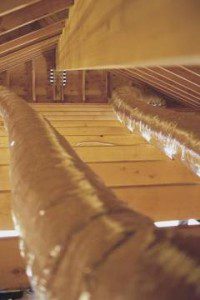 Last week we cleared the dust on the topic of insulation. I hope it got you thinking about how to make your home more efficient, and if so, this is a great first step. Good news: we’ve been getting positive feedback from Central Florida residents who are now breathing cleaner air thanks to the team at Tropical Air of Central Florida.
Last week we cleared the dust on the topic of insulation. I hope it got you thinking about how to make your home more efficient, and if so, this is a great first step. Good news: we’ve been getting positive feedback from Central Florida residents who are now breathing cleaner air thanks to the team at Tropical Air of Central Florida.
Many of our readers have even begun their own research into the types of insulation so that they can get started on the next phase of energy conservation in their home as quickly as possible.
Good move, guys. And don’t forget, you can e-mail me at Rikki@tropical-air.com or call our office at 321-972-9935 if you have questions or want more detail than we get into here. So, ready for the next step in our insulation adventure?
R-Value
Just before we get into the different types, let’s talk standards. Insulation has its standard measured in what is called R-Value, otherwise known as Thermal Resistance. The substances used in different types of insulation have varying R-Values, so it’s going to take some calculation to figure out what works best for your home. For an easy-to-use R-Value calculator to determine your insulation needs, the Department of Energy offers an Insulation Fact Sheet and R-Value calculator. Take a moment and go to http://web.ornl.gov/sci/roofs+walls/insulation/ins_16.html.
Wanting more variety of insulation choice? Check out Energy.Gov at http://energy.gov/energysaver/articles/types-insulation, and you will find just that. This site has more than a thorough list of all insulation types and materials – it also offers a slew of related articles and insight for your empowerment. For our purposes, we’ll simplify things a bit and talk about the only two types you should ever really need.
Batts and Rolls
Blanketed insulation, such as batts and rolls, fills in nicely between joists and studs that have standard spacing and no obstruction. It is made of fiberglass, wool, and other fibers, and it is very affordable.
Blown-In
Blown-in insulation is also fiberglass-based, but is also made of cellulose and mineral wool. This type of insulation is literally blown into the walls and floors, sometimes poured in between joists. The advantage of this is that it can go anywhere. If your spaces are not standard or if there are obstacles in the way, blowing in insulation just might be your answer.
Which insulation is right for you? Much of it depends on design, budget, and goal. The best thing to do is learn from the aforementioned sites and ask the right questions when speaking to an insulation specialist. On this note, don’t hesitate to throw any insulation, heating, and/or air conditioning questions our way at Tropical Air.
Be sure to check in next week as we highlight effective methods about getting the job done right, the first time.
Keep Cool and Informed,
Rikki Payne
Your Licensed A/C and Heating Connection
321-972-9935
www.Tropical-Air.com
Serving Greater Central Florida


